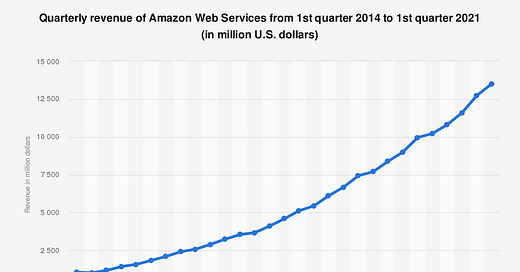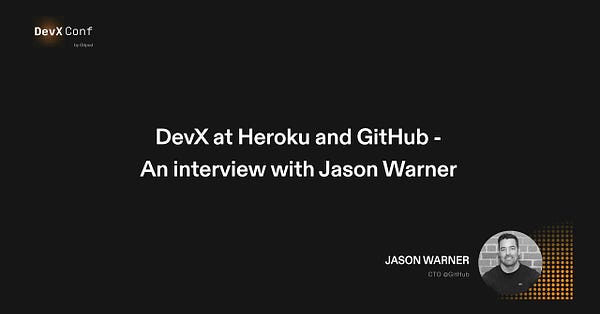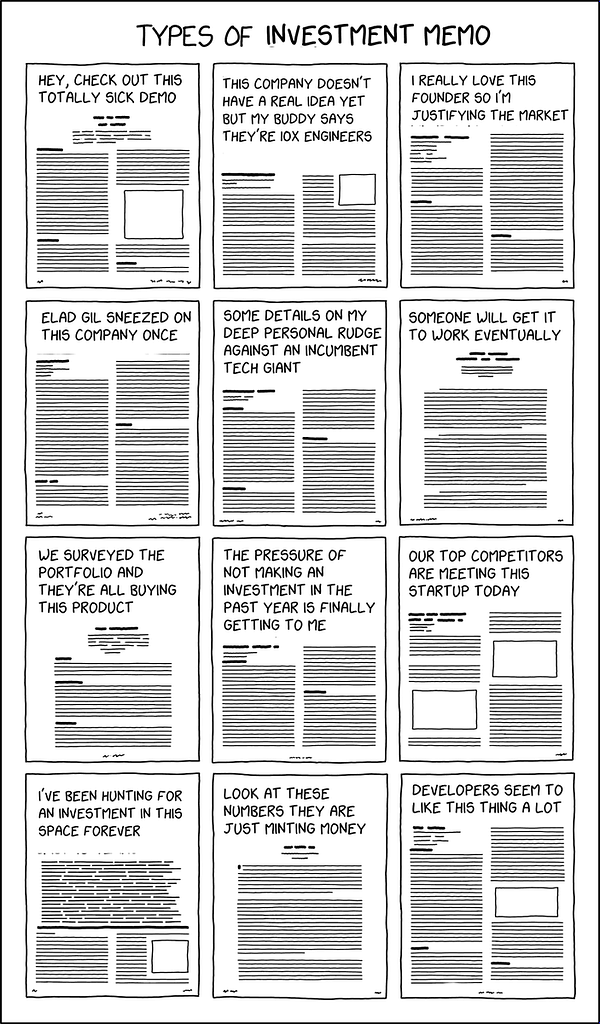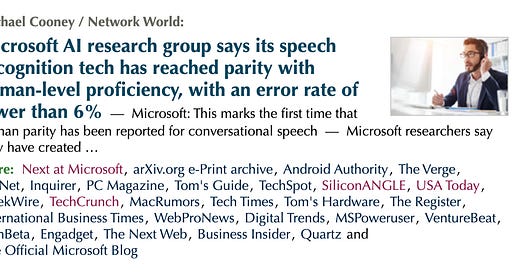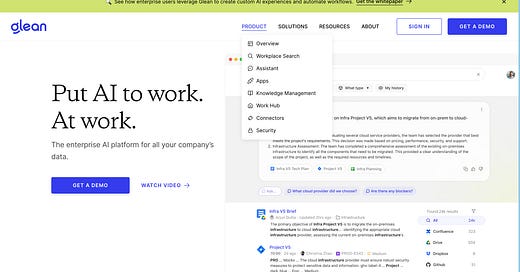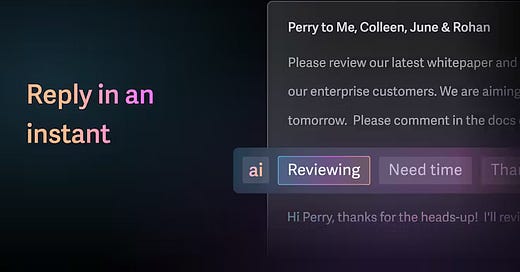

Discover more from What's Hot 🔥 in Enterprise IT/VC
The big 3 ☁️ providers announced earnings this week and the numbers continue to defy gravity. AWS slightly accelerated growth 32% YoY to $13.5B in revenue while Google Cloud grew 46% to $4.05B and Azure grew over 50% (does not disclose actual numbers). The scale of these numbers is 🤯 and we’re still in the early innings. Sometimes numbers in isolation remove us from the big picture - take a look at this chart from Statista on AWS - Q1 2014 at $1B and 7 years later at $13.5B - where else can you find this growth at this scale???
Let’s zoom into what Satya Nadella from Microsoft has to say about how it will sustain future growth - in a nutshell, he covers developers, ☁️, collaboration, and automation.
Here are a few snippets from this week’s Q3 Earnings call:
☁️ will be a multi-cloud world according to Microsoft:
We are building Azure to address organizations' needs in a multi-cloud, multi-edge world. We have more data center regions than any other provider, including new regions in China, Indonesia, Malaysia, as well as United States. Azure has always been hybrid by design, and we are accelerating our innovation to meet customers where they are. Azure Arc extends the Azure control plane across on-premise, multi-cloud, and the edge and going further with Arc-enabled machine learning and Arc-enabled Kubernetes.
On developers - Github at 65M developers! And ❤️ this - idea to code and code to cloud…
As every organization looks to build its own digital capability, they will need to modernize existing apps, build new apps, and have a standard way of doing both. We offer the most popular tools to help developers rapidly grow from idea to code and code to cloud. Visual Studio has more than 25 million monthly active users and GitHub is home to nearly 65 million developers. Over the past 12 months, the number of monthly active organizations using GitHub increased 70%.
and where is growth in next 10 years? Developers!
Developer SaaS, one of the most exciting things, again, that I believe is the next 10 years is going to be about developers and the digital capability in every enterprise, and we are the leaders there. When you think about VS Code, as well as GitHub.
RPA and automation - Microsoft is still early on automation journey but one to be aware of for sure…
All up, Power Platform is being used by nearly 16 million monthly active users, up 97% year over year. Revenue increased 84% year over year. Telstra, T-Mobile, Toyota North America, and Unilever have all built centers of excellence for Power Platform with thousands of workers who are using those low-code, no-code tools to build apps and workflows for everything from COVID-19 screening to product quality control. In robotic process automation, Coca-Cola saved months of development time by integrating Power Automate with legacy systems to automate shipment verification, payroll processing, and much more.
Collaboration - frankly the product has so much more to go to reach Slack-like usability but distribution and bundling matters as it now hit 145M daily actives…
Now, on to Microsoft 365 and Teams. Hybrid work will require a new operating model. That's why we built Teams as the organizing layer for all the way people work, learn, and collaborate. Teams now has over 145 million daily active users, almost double the number a year ago.
As always, 🙏🏼 for reading and please share with your friends and colleagues. In addition, I’d like to send my thoughts and prayers to those in India and if interested I chose to donate to Project Hope to help provide PPE and medical equipment to front-line workers. So awesome to see some of those in the tech industry like Marc Benioff/Salesforce take matters into his own hands.

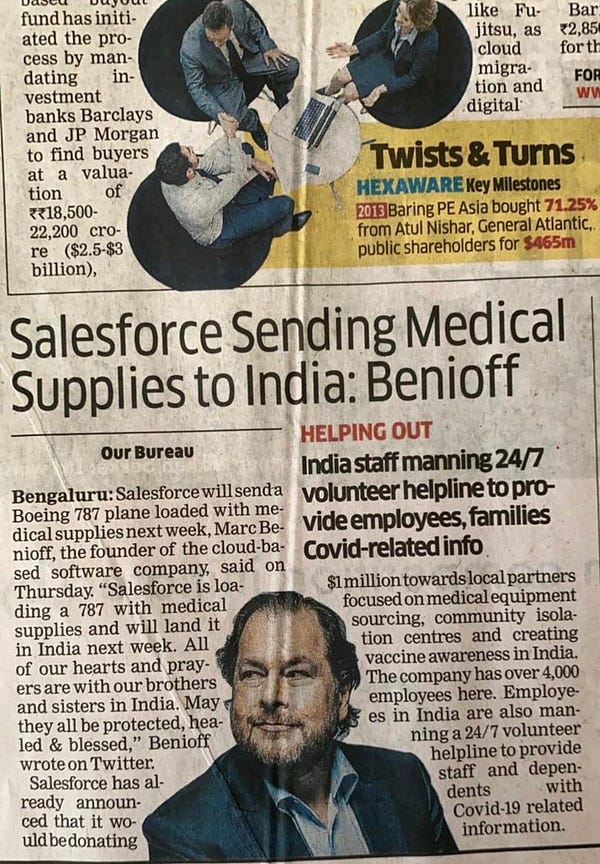
Scaling Startups
👇🏼 Must watch with Kyle Parrish, Head of Sales at Figma on how to make your first sales hire and scale a product led growth team - great timing especially following the deep dive on Figma’s product and TAM expansion in last week’s newsletter
when to add the human touch in the PLG journey to guide customers and add value and get strong product feedback
use data in early days and have to look at right signals, knowing when to go outbound for a PLG motion
need clear product delineation for “upsell” to enterprise tier - usually admin, security and some end user feature to capture more value
Quota - start with lower quotas early as sales folks need to make money and over time and as company scales, gradually increase quota
Spot on!
Must have had this discussion with founders 5 times last week…
👇🏼great 🧵 on product dev and design
Enterprise Tech
Amazing Developer Experience Conference (DevX) hosted by GitPod - I encourage checking out and here’s a great interview with Jason Warner, CTO Github
One of best 🧵 I’ve read on the future of remote work from FirstBase founder who recently raised a Series A from a16z - so many 💎
Shifting cost optimization left (RedMonk): Spotify Backstage Cost Insights - another example of shifting left from ops to devs and also a great primer on what backstage is and why developer portals matter
Spotify has almost five hundred engineering teams today. It does about twenty thousand deployments a day across thousands of micro services. That’s a huge amount of complexity to manage, and it’s not really amenable to simply pointing at spreadsheets and saying: “we need to fix this”. Instead Spotify hacked the culture. It went back to basics and thought about cost as a problem to be solved with its engineering culture.
🤯 Containers, containers, containers in PRODUCTION - from Morgan Stanley report
Forbes AI 50 - includes data infra Databricks, Datarobot, Dataiku, Domino and more
🤔 - Snowcrash and the metaverse is coming according to Jensen Huang, CEO of Nvidia
In the future, the digital world or the virtual world will be thousands of times bigger than the physical world. There will be a new New York City. There’ll be a new Shanghai. Every single factory and every single building will have a digital twin that will simulate and track the physical version of it. Always. By doing so, engineers and software programmers could simulate new software that will ultimately run in the physical version of the car, the physical version of the robot, the physical version of the airport, the physical version of the building. All of the software that’s going to be running in these physical things will be simulated in the digital twin first, and then it will be downloaded into the physical version. And as a result, the product keeps getting better at an exponential rate.
The second thing is, you’re going to be able to go in and out of the two worlds through wormholes. We’ll go into the virtual world using virtual reality, and the objects in the virtual world, in the digital world, will come into the physical world, using augmented reality. So what’s going to happen is pieces of the digital world will be temporarily, or even semipermanently, augmenting our physical world. It’s ultimately about the fusion of the virtual world and the physical world.
Shopify great harbinger of return to real world as it seems like share of digital will continue to hold, up 10% on blowout earnings on Wednesday
 Three consumer preference trends that will continue post-pandemic: 1. The center of gravity in retail is shifting from brick and mortar to online 2. Buying from brands that align with their values 3. Buying directly from independent brands"We're this rare breed in that we were this wonderful pandemic story, and we're now transitioning to being this global recovery story," Shopify president @harleyf says about growth post-pandemic. @CNBCTechCheck https://t.co/33YrKN1hWI https://t.co/kQVWJxTzha
Three consumer preference trends that will continue post-pandemic: 1. The center of gravity in retail is shifting from brick and mortar to online 2. Buying from brands that align with their values 3. Buying directly from independent brands"We're this rare breed in that we were this wonderful pandemic story, and we're now transitioning to being this global recovery story," Shopify president @harleyf says about growth post-pandemic. @CNBCTechCheck https://t.co/33YrKN1hWI https://t.co/kQVWJxTzha CNBC @CNBC
CNBC @CNBCMassive fundings during week include Sysdig (monitoring conatiners/apps in cloud) at $1.9B valuation and MessageBird (API communications platform) added on to it’s Series C at $3B+
Markets
🤣
Interesting when super angels lead $50M rounds - congrats to Josh and friend Rahul Vohra - what does that mean for those later stage investors? Relationship and value add matters.


Subscribe to What's Hot 🔥 in Enterprise IT/VC
Ed Sim's (@boldstartvc) weekly readings and notes on enterprise VC, software, and scaling startups

